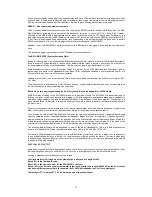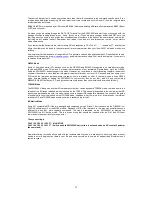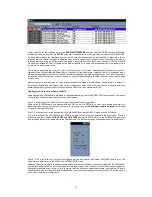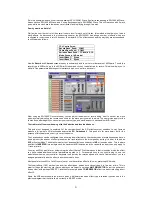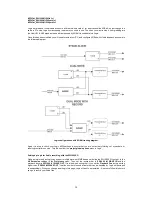
25
Run up Cubase VST, set up your ASIO multimedia driver to wave profile the SW1000XG on all ports if you are using
the older MME driver for Windows (the standard MME one that comes with the SW1000XG). If you are using the
latest Yamaha ASIO driver and have installed it correctly (see the section on ASIO in chapter 12), you can skip this.
We shall delve deeper into ASIO and the issues of latency later in this book.
Make sure you have the number of audio tracks in VST set to a sensible level (minimum should be 12 to take full
advantage of the SW1000 wave ports). This is set up from the audio system menu (number of channels). Go to your
VST audio master mixer, make sure that all of the SW1000XG output wave ports are active (green light on each).
Go to your monitor mixer, and set your 12 (or more tracks) to Master, Buss 1, 2, 3, 4, 5, and 6 respectively (tracks
1&2 to master, 3&4 to buss 1, 5&6 to buss 2 etc). This will assign your VST channels in the Cubase arrange page to
the master outs (which you have previously made active).
Make sure that you pan the monitor mixer tracks hard left and right so that they pass over to the SW1000XG
individual audio channels (1-12) in the XGEdit analogue mixer.
Now, set up a MIDI track, and call it SW1000XG Control. Make sure that the channel status of this track is set to
all
,
and that when you move a slider in XGEDIT, the MIDI input led in Cubase VST (on the transport bar) lights up. If it
doesn’t then you need to check all your settings again. Basically if the LED indicating MIDI input activity lights up
when you move a slider in XGEdit (make sure you set XGEdit to stay on top, as it makes it easier to work with!) then
your 2 applications (XGEdit and VST) are talking to each other.
If it does, then you can safely record all your audio parts in VST as you would normally, and when you come to
mixing them, just make sure that the track you have selected in the VST arrange page is the SW1000XG Control
track.(The mixer in XGEDIT as you will have seen if you had followed our tips with regards to MIDI-OX earlier in this
guide, is sending out pure sysex data, so VST needs to see this incoming data, and hence you need a MIDI track
highlighted).

